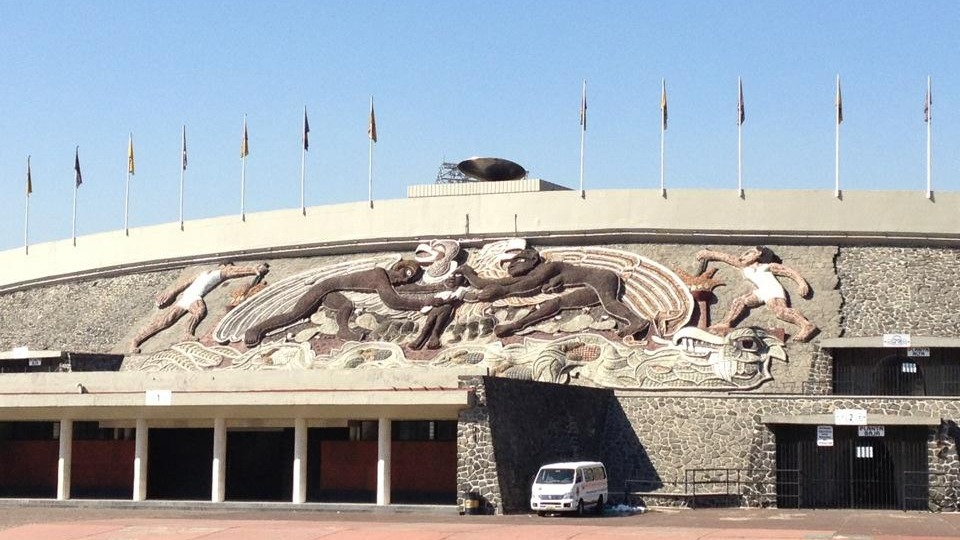University Olympic Stadium
Not just home to the Pumas, it's a true landmark in Mexico City sports history.

The Estadio Olímpico Universitario is one of the most iconic sports venues in Mexico City and a true architectural gem within the campus of the National Autonomous University of Mexico (UNAM). Inaugurated in 1952, this multi-purpose stadium was designed by architects Augusto Pérez Palacios, Jorge Bravo, and Raúl Salinas Moro, and is considered a masterpiece of Mexican modernism.
With a capacity of more than 72,000 spectators, it is the second-largest stadium in the country and has hosted some of the most significant moments in Mexico’s sporting history. It served as the main venue for the 1968 Olympic Games, hosting both the opening and closing ceremonies, as well as the athletics competitions.
Nestled in a natural depression in the Pedregal de San Ángel, the stadium was built in just eight months with the work of more than 10,000 laborers—a remarkable achievement for its time. Renowned artist Diego Rivera was commissioned to create the mural The University, the Family, and Sports in Mexico, which, although left unfinished after his death in 1957, remains a powerful cultural symbol of the site.
The Estadio Olímpico Universitario is also the only Olympic stadium in the world located within a UNESCO World Heritage Site, as Ciudad Universitaria was granted this designation in 2007. Since its inauguration, it has witnessed some of the most memorable sporting and cultural events in the nation, including historic football matches and the 1986 FIFA World Cup.
Today, the stadium serves as the home of the Pumas UNAM football team and continues to be a space where history, art, and sport come together in the heart of Mexico City. Visitors can easily reach it via the Capital Bus South Central Circuit, which offers scenic tours around Ciudad Universitaria before looping back north.